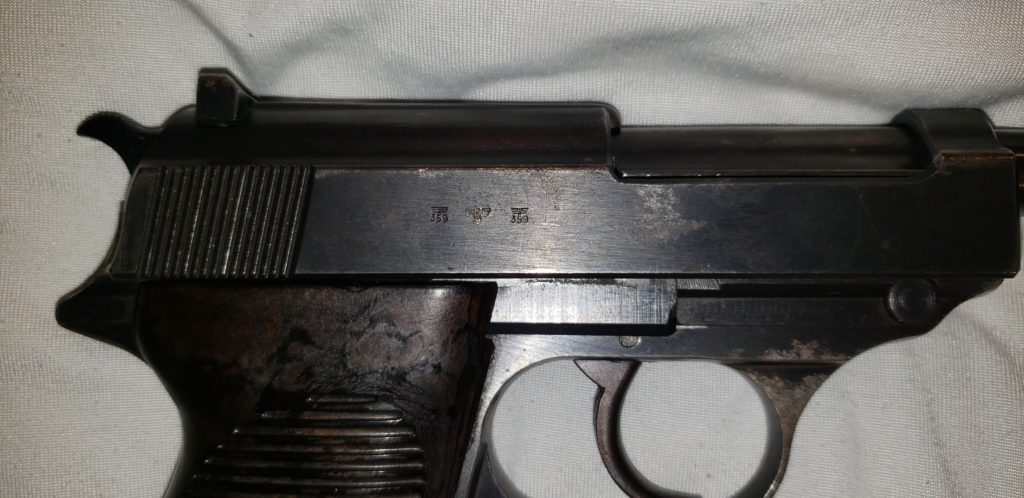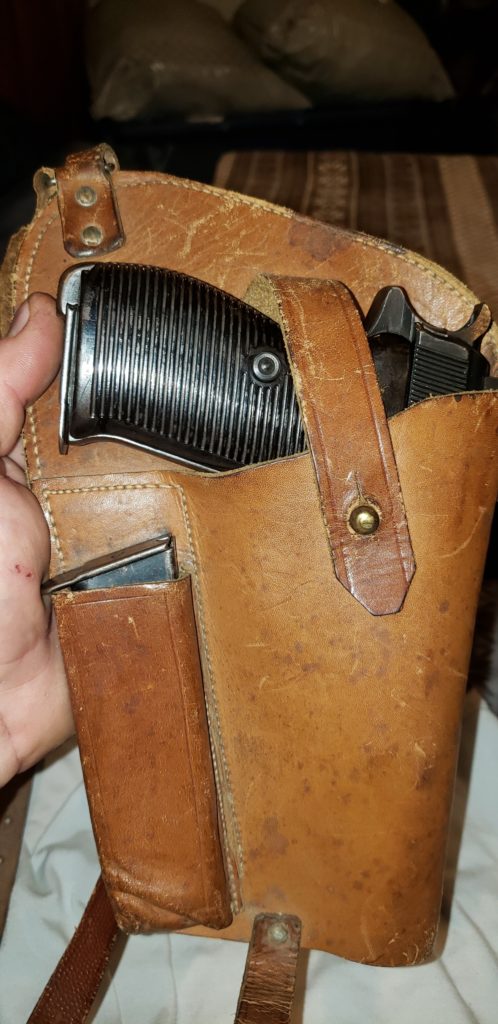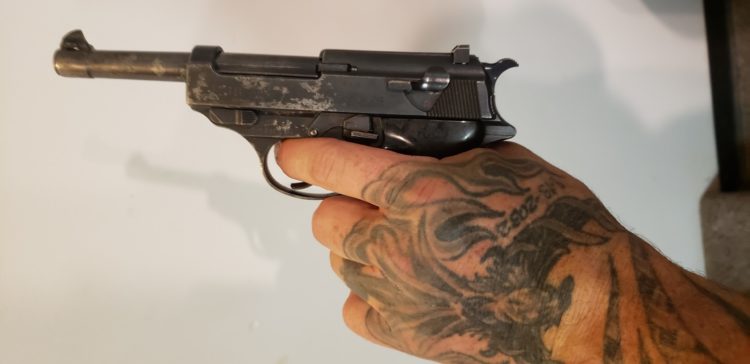When discussing German military pistols many people first think of the iconic Luger P08. But I’d argue that the Walther P38 (P.38 in official jargon) should hold the reins. The Walther was truly a beast of burden. It remained the official German military pistol from the outset of World War II until 2004.
A Long Service History
During Nazi Germany’s military buildup in the 1930s, the Wehrmacht was looking for a replacement to the expensive Luger, whose production was slated to finish in 1942.
Walther P38’s design was developed by Carl Walther GmbH, which had been designing weapons since the mid-1880s. The company had also manufactured the PP (Polizeipistole, or police pistol) and PPK (Polizeipistole Kurz, or police pistol short) for the German police.

The first designs were not accepted. Then Walther’s design team came up with the short-recoil HP (Heeres Pistole), the commercial variant of the P.38. It was this version that the German army adopted in 1938 and two years later put into mass production as the Walther P.38. The pistol fired the 9x19mm Parabellum, but a few fired the 7.65x21mm Parabellum.
The pistol was manufactured until the end of the war.
Once the German Army was reformed in 1955, it chose the P.38 as its service pistol. In 1963, the pistol was redesignated as the P1 and its frame changed to an aluminum one from the original steel. During the 1990s the Germans began phasing out the pistol with the P8, finally retiring the weapon altogether in 2004.
The Groundbreaking Features of the Walther P38

The Walther P38 broke new ground in the design of semi-automatic handguns. It was the first pistol to combine a locked breech with a Double Action/Single Action trigger. The weapon’s hammer could be carried safely with a round in the chamber, and the first shot could be fired in double-action mode, with subsequent shots fired in single-action. Today, this feature has become widely accepted by military and police organizations worldwide.
The gun is also one of the first service pistols to employ a loaded-chamber indicator. This is a small piece of rod that protrudes out of the top toward the rear of the slide when a round is in the chamber.
The handgrips on the early P38s were made from walnut, but the costs of wartime production necessitated changing the material to Bakelite soon after production began. The left grip panel has a recessed lanyard ring. Its sights consist of a fixed front blade and a fixed notched rear.
Together, these features meant that the pistol could be holstered safely but be ready with a round in the chamber. Of course, this is the way that special operators of today carry weapons, but for the regular troops of the day, this was mostly unheard of. In order to fire the weapon, the soldier only had to draw the pistol, flip off the safety, and pull the trigger.
The Walther P38 pistol is 8.5 inches in length with a 4.9-inch barrel. The internal magazine holds eight rounds.
Firing the Pistol Today
In World War II, the Germans loved the weapon for its firmness, reliability, and toughness. It was much tougher than the P.08 and handled the dirt, mud, and general debris better than the Luger.
Due to its quality and status, it became a favorite target for American GIs to procure as a sidearm or souvenir. Thousands made it back to the United States. My father was in a tank destroyer unit during WWII and captured one (complete with a shoulder holster with a spare mag holder) from a captured German armor officer.

The weapon is solid and you can feel the tight German engineering. It shoots smoothly, accurately, and reliably. Although it is almost 80-years-old, the weapon is 100 percent original. And it still functions like it did when it was produced.
I have fired it many times. Nothing at the range grabs much more attention than a wartime-produced Walther P38.
While I’ve never been a big fan of the 9mm (I remain a 1911 fan), the P.38 is a fine pistol, and it remained in service for a such long time for a good reason.
If you ever get the chance to fire one, I guarantee that you will like it.










COMMENTS
You must become a subscriber or login to view or post comments on this article.